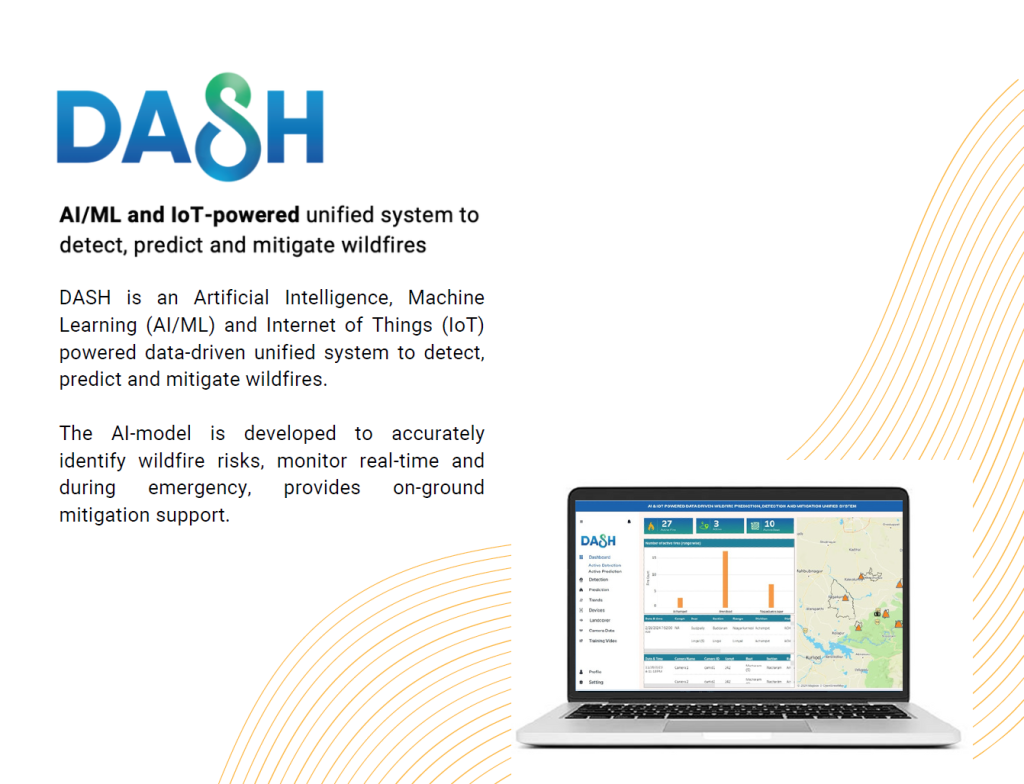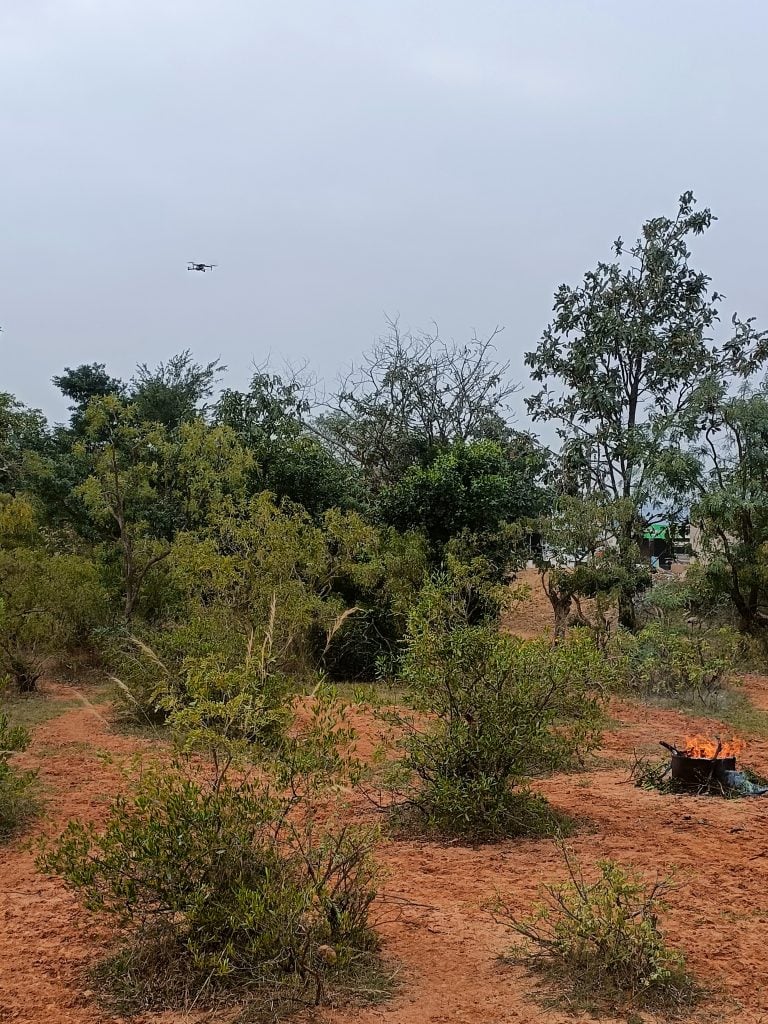Foundation Projects
DASH: AI and IoT powered data-driven wildfire detection and prediction system
Sweet Lime E-Commerce Private Limited
Wildfires or forest fires are a growing threat with devastating consequences. This global challenge prompted the G20 nations, through the Delhi Declaration 2023, to unanimously commit to addressing wildfire prevention and mitigation efforts.
In India, about 36% of forest cover is prone to wildfires due to inadequate infrastructure, limited community involvement and human activities. The project team had already designed and developed DASH, an AI/ML and IoT-powered unified system to detect, predict and mitigate wildfires. Their goal is to accurately predict, swiftly detect and efficiently mitigate wildfires in real-time, safeguarding biodiversity, reducing carbon emissions and fostering a sustainable future.
This project piloted DASH in Telangana’s Nallamala Forest area, which faces frequent wildfires. The pilot provided an opportunity for real-world testing and improvement of the system, working closely with the Forest Department and the community.

Key activities undertaken include setting up of a technical committee, conducting research, deployment of pilot testing platform, mobile application for reporting, hardware installation (LoRaWAN MESH, cameras, sensors, solar panels etc.), continuous ongoing AI/ML-model training using a diverse range of datasets (satellite, weather, landcover, wind speed, images etc.), day-to-day risk and operational management, conducting simulations, officer training and community awareness sessions. As a mitigation measure, different kinds of drones were tested to map inaccessible areas, aiding beat officers in assessing the fire through aerial surveillance and dropping water on the burnt areas.
The DASH unified system demonstrated significant capabilities in reducing wildfire prediction and detection alert and notification times. Initially, the forest department received wildfire detection notifications within a window of 6 to 12 hours. However, with the implementation of the DASH unified system, wildfire prediction has been enhanced by leveraging a broader range of datasets, resulting in higher accuracy and reduced false alarms, both positive and negative. For instance, the integration of historical data from satellites, along with data on climate, land cover, and weather, has increased the robustness of predicting trends and achieved a 50% increase in prediction accuracy while reducing false positives in detection by 30%. Furthermore, the deployment of an on-ground detection ecosystem utilizing IoT devices, sensors, drones, and social media reporting has enabled the detection of wildfires and the dispatch of notifications with geo-coordinates within minutes, reducing detection time to less than two hours. Moreover, testing has shown that technology can facilitate mitigation and post-disaster management efforts effectively. Current models do not utilize sensors or other datasets but rely solely on satellite data, highlighting the advanced capabilities of the DASH system.
Following are some of the project's key learnings:
1. Safeguarding the forests and biodiversity is a matter of national significance, essential for the protection and preservation of both tangible and intangible assets.
2. Predominantly, wildfires at the pilot site are ground-level fires, often initiated by human activity and exacerbated by environmental conditions within the forest. As part of the project efforts, the project team conducted testing using a variety of available data and researched to explore the potential integration of human behaviour into its AI/ML model.
3. Local communities and tourists seem to have an awareness of wildfires but exhibit cognitive dissonance regarding their habits and practices. It is important to have continuous awareness programmes.
4. Stakeholders are keen to pilot the DASH system in other forests, acknowledging the need for tailored solutions due to the unique challenges of each location. Wildfires are a priority and stakeholders are seeking an extension of the technology solution to address a range of pressing issues in forest management.



